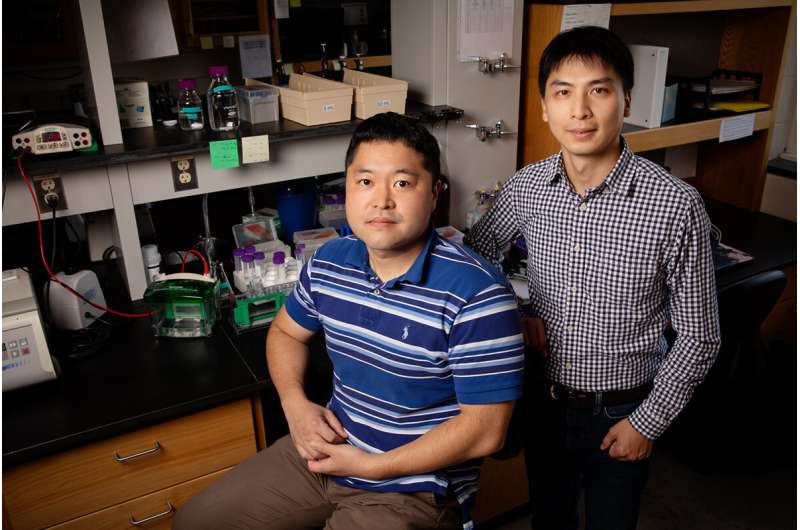Study offers insight into underlying causes of seizure disorder in babies

Researchers report that infantile spasms, a rare but serious seizure disorder in babies, appear to be the result of a molecular pathway gone awry. In their study of a mouse model of the disorder, the researchers discovered that genetic mutations associated with the disease impair a pathway that is involved in building new synapses in the hippocampus, a brain region essential to learning and memory.
The findings, described in the journal EMBO Reports, also detail the use of a potential therapeutic intervention to address some of the developmental problems that are often associated with infantile spasms.
"We are trying to understand the reasons behind learning and memory disabilities in patients with infantile spasms," said Nien-Pei Tsai, a professor of molecular and integrative physiology at the University of Illinois Urbana-Champaign who led the study with U. of I. research scientist Kwan Young Lee. Tsai is a faculty member in the Beckman Institute for Advanced Science and Technology at the U of I.
While infantile spasms often disappear by the age of four or five, long-term developmental problems affecting memory and learning persist, Tsai said.
"The learning and memory deficits are long-lasting and the patients often require assistance at school," he said. "This tells us that the seizures and the learning defects are likely caused by different issues in the brain, but no one really knows how."
Previous research has found that infantile spasms are often associated with mutations in a gene known as Nedd4-2, which codes for a protein called a ligase that regulates the excitability of neurons, Tsai said.
"To study the role of this gene, we used mice in which Nedd4-2 is selectively removed from the brain as a model to mimic patients with impaired Nedd4-2," he said.
The researchers conducted behavioral and physiological experiments in mice with impaired Nedd4-2 ligase function and in mice with normal function. They also looked at how a lack of the ligase affected biochemical pathways in mouse neurons grown in cell culture.
They found that male mice lacking adequate Nedd4-2 ligase levels in the hippocampus were impaired in their ability to learn and remember. This disability was associated with problems in the structure of excitatory synapses, which carry electrical signals between neurons, in the hippocampus. The researchers focused on neurons in the hippocampus because this brain region plays a key role in converting short-term memory to long-term memory.
Their experiments showed that a lack of Nedd4-2 in the hippocampus disrupted a pathway that regulates the growth of filaments, called actin, that support the formation of cellular structures such as synapses. Cells lacking adequate levels of the ligase experienced the destruction of these filaments and had fewer excitatory synapses in the hippocampus.
"Synapses need structural support to sustain their functions and integrity," Tsai said. "Actin, which is one of the critical structural components in a cell, is made up of monomers that can attach to one another to form polymers. When the actin polymers are formed in synapses, the synapses become stronger. This process is critical for learning and memory."
When the team exposed mice lacking adequate Nedd4-2 levels to a drug compound that mimics the activity of the ligase in the brain, the mice appeared to regain some of their lost hippocampal-dependent memory. The same compound restored hippocampal excitatory neurons in cell culture, the researchers found.
"Because we showed that some of the learning and memory issues associated with infantile spasms can be improved by a synthetic peptide in animals, it means that one day we may be able to medically enhance learning and memory of patients who carry mutations in this Nedd4-2 gene," Tsai said.
More information: Kwan Young Lee et al, Infantile spasms‐linked Nedd4‐2 mediates hippocampal plasticity and learning via cofilin signaling, EMBO reports (2021). DOI: 10.15252/embr.202152645



















